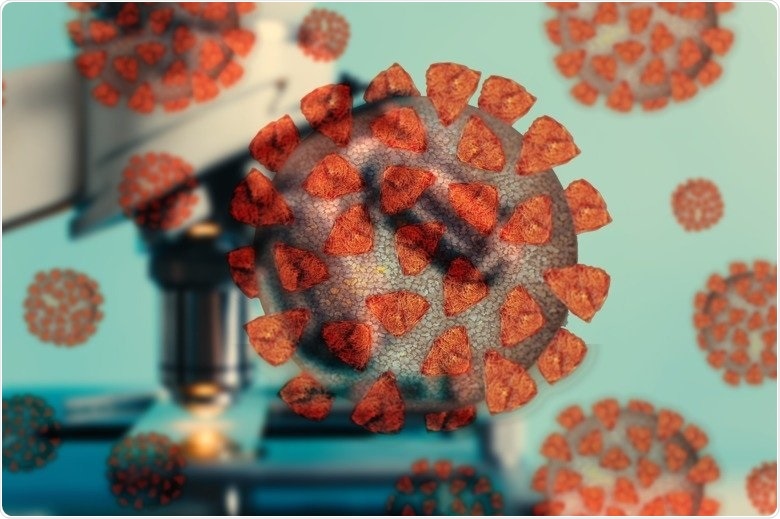The pandemic made it obvious that individuals suffering from obesity and cardiovascular disease are at a greater risk of developing very serious and even fatal COVID-19 disease. Scientists from the Karolinska Institutet discovered certain metabolic mechanisms that SARS-CoV-2 employs to attack lung tissue.

Image Credit: Gerd Altmann/Public Domain/Pixabay.
The findings might be used to treat COVID-19 and other viruses like HIV-1 and the Crimean-Congo hemorrhagic fever virus. The observations have been published in the Molecular & Cellular Proteomics journal.
The SARS-CoV-2 virus triggered the corona pandemic that gave rise to a serious and progressive health crisis worldwide. Many individuals with the disease develop mild to moderate symptoms, but patients with metabolic disorders like diabetes, obesity, and cardiovascular diseases are at a greater risk of severe illness.
Viruses usually spread by “piggy-backing” on substances and mechanisms crucial to the cellular energy supply, the metabolic pathways, in an invaded body or other organisms.
The research works carried out on COVID-19 patients at the time of the pandemic show a connection between disease severity and metabolic disorder with greater levels of lipids (fats) in the blood. However, metabolism is a highly individual process and is impacted eventually by various factors, like sex, age, diet, and lifestyle.
Metabolic pathways
Scientists from the Karolinska Institutet recently analyzed which parts of the cell’s energy supply are particularly vital to SARS-CoV-2 and how they impact the severity of the disease.
It is known that the covid virus uses the metabolic pathway AKT/mTOR/HIF-1. The current research matches this understanding.
The scientists found that glycolysis and glutaminolysis are the metabolic pathways that the virus “prefers” when targeting the lungs—both major processes in cellular energy supply and function.
The study shows that when SARS-CoV-2 infects lung cells, glycolysis and glutaminolysis play an important part in its spread and growth. By blocking these pathways, we can limit viral production. We also observed several toxic metabolites, such as lactate and glutamate, in the blood plasma of the most severely ill patients.”
Ujjwal Neogi, Study Last Author and Researcher, Department of Laboratory Medicine, Karolinska Institutet
A major observation of the current research is a biomarker for the severity of the disease.
We’ve identified a carbohydrate, mannose, as a biomarker for severe COVID-19.”
Shuba Krishnan, Study First Author, Department of Laboratory Medicine, Karolinska Institutet
Blocking viral spread
The scientists emphasize the need to know more about the elevated levels of toxic metabolites in severely ill patients.
Changes in these metabolites can have lasting effects on insulin resistance, neurocognitive disorders, and organ failure. The elevated level of mannose has a potential correlation with the risk of developing type 2 diabetes after COVID-19 infection.”
Carl Johan Treutiger, Researcher, Department of Medicine, Huddinge, Karolinska Institutet
A probable therapeutic strategy is by blocking viral spread by starving it out via the cells’ energy supply. This can also prove an efficient treatment for the Crimean-Congo hemorrhagic fever virus and a functional cure for HIV-1, two other viruses that the scientists are concentrating on.
The findings are based on blood samples of 41 patients with COVID-19 examined through different techniques like plasma metabolomics. The scientists also analyzed the molecular pathway through which SARS-CoV-2 enters lung tissue.
Source:
Journal reference:
Krishnan, S., et al. (2021) Metabolic perturbation associated with COVID‑19 disease severity and SARS‑CoV-2 replication. Molecular & Cellular Proteomics. doi.org/10.1016/j.mcpro.2021.100159.